Hiroshi Sugimoto's glass cube hosts Japanese tea ceremonies in Venice
Venice Architecture Biennale 2014: traditional Japanese tea ceremonies were staged inside a glass tea house designed by Japanese artist Hiroshi Sugimoto at this year's biennale.
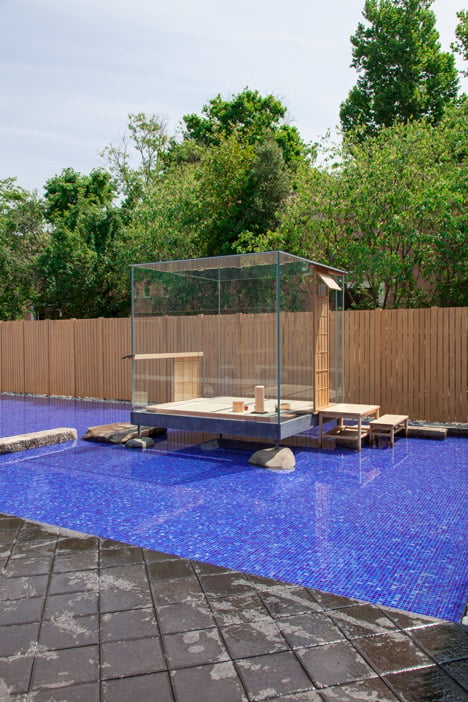
Located on the island of San Giorgio Maggiore, the Glass Tea House Mondrian was designed by Hiroshi Sugimoto as two elements – a formal courtyard with a reflecting pool, and a 2.5-metre glass cube that hovers above the surface of the water.
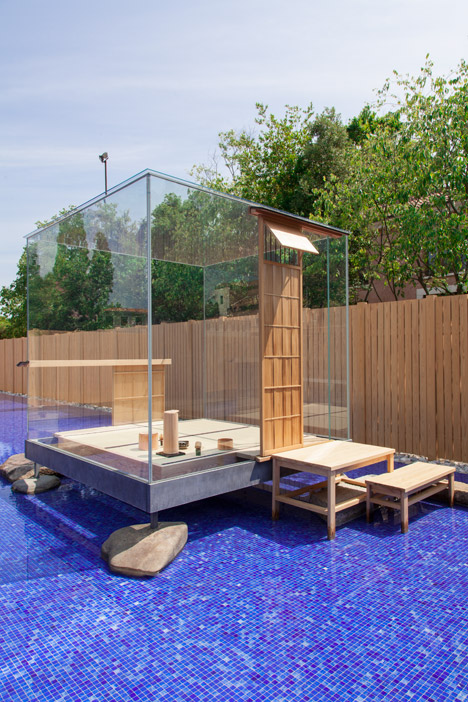
The artist wanted the structure to provide a setting that expresses the meticulous care that goes into the tea ceremony, which he believes encompasses all of the individual arts of the Western world.
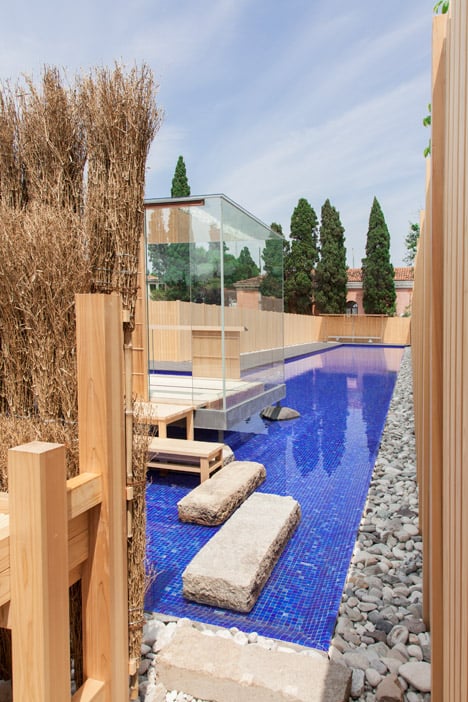
"In addition to painting and dance, there is sculpture (in the shape of the porcelain bowl), music (in the sound of the water on the boil) and architecture (in the form of the tea ceremony arbor)," he said. "These disparate elements intertwine, coalescing to form a single, perfect whole."

Sugimoto compares the rectilinear form of the tea house and its positioning in the landscape with the work of Dutch De Stijl painter Piet Mondrian.
"I was startled to discover something redolent of Mondrian in the Glass Tea House when it was completed," said Sugimoto. "The quest for abstraction, I realised, had been underway in the context of the tea ceremony for 300 years before Mondrian was born."

A narrow pathway leads visitors across the courtyard, while a chain of stepping stones provide access to the floating cube.
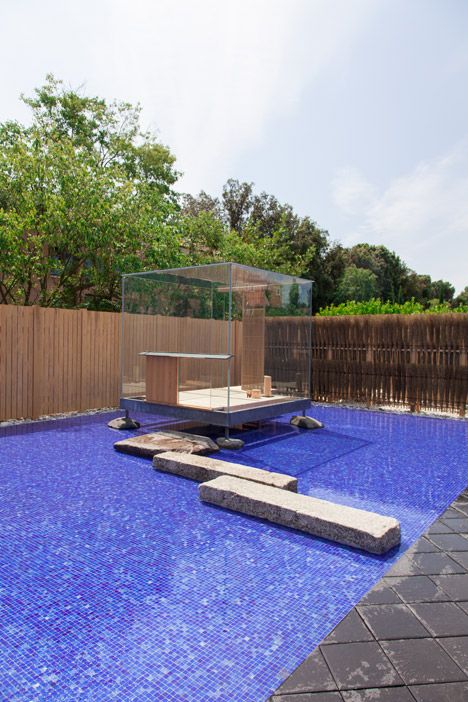
During the opening week of the biennale, the space hosted tea ceremonies performed by a Japanese tea master, using bespoke utensils designed by Sugimoto and produced by artisans in Kyoto.
The tea house will also now be used as the venue for a programme of activities, events and talks.
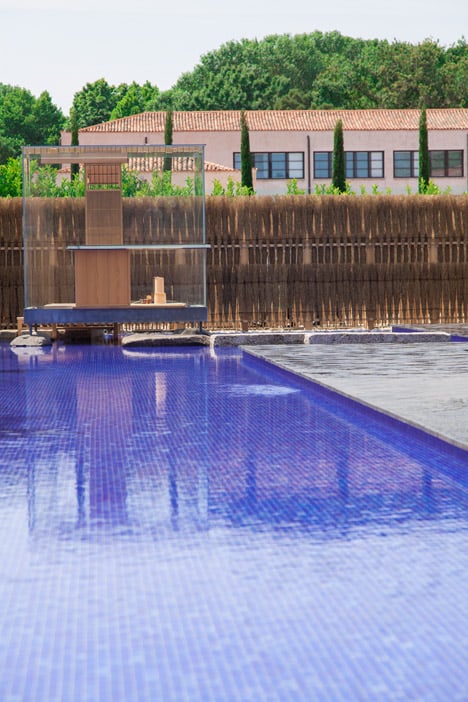
Photographs are copyright Patricia Parinejad and used with permission.
Here's the full statement from Hiroshi Sugimoto:
Glass Tea House Mondrian
In the 16th century it became the custom for cultivated Japanese people of a certain social status to enjoy the rituals of the tea ceremony. The quotidian act of preparing a cup of tea for a visitor was raised to the level of art, with meticulous care lavished up on the unique goal of entertaining one's guests. In a small room, a single but magnificent picture would be hung. Flowers to set the picture off were arranged in the alcove. Especially strict attention went into selecting a bowl of the right colour and shape from which to drink the tea. Finally, every movement of the host conducting the ceremony had to be as graceful as a dance by Nijinsky.
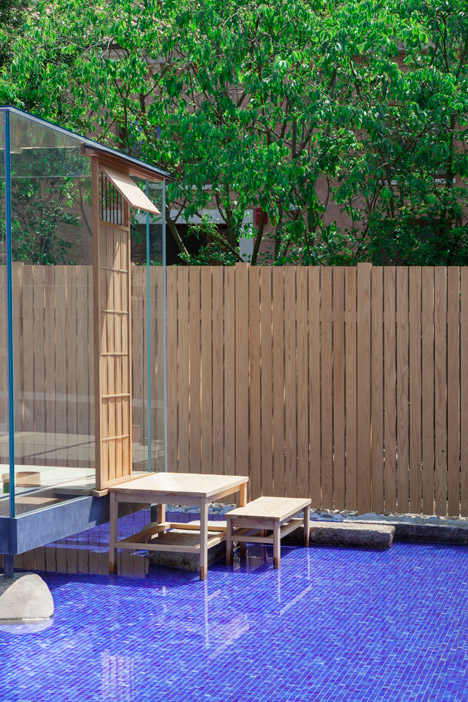
The tea ceremony encompasses all the individual arts of the West. In addition to painting and dance, there is sculpture (in the shape of the porcelain bowl), music (in the sound of the water on the boil) and architecture (in the form of the tea ceremony arbor). These disparate elements intertwine, coalescing to form a single, perfect whole.

Traditionally, the name of a tea house has to be a poetic evocation of space. I was startled to discover something redolent of Mondrian in the Glass Tea House when it was completed. The quest for abstraction, I realised, had been underway in the context of the tea ceremony for 300 years before Mondrian was born. Sen no Rikyû, the man credited with perfecting the tea ceremony aesthetic, essayed Mondrianesque abstraction in the way he placed stones in the garden or composed flat wall surfaces at Taian, a 16th century tea room which still stands near Kyoto. Inevitably, Sen no Rikyû had a powerful influence on my design for the Glass Tea House. I decided that a Japanese transliteration of the name "Mondrian" would be an ideal name. I combined these characters – 聞鳥 – that betoken "a modest house where one can hear the bird sing". I like to think that this tea house was built by Mondrian after he heard Sen no Rikyû speaking to him through the singing of the birds.